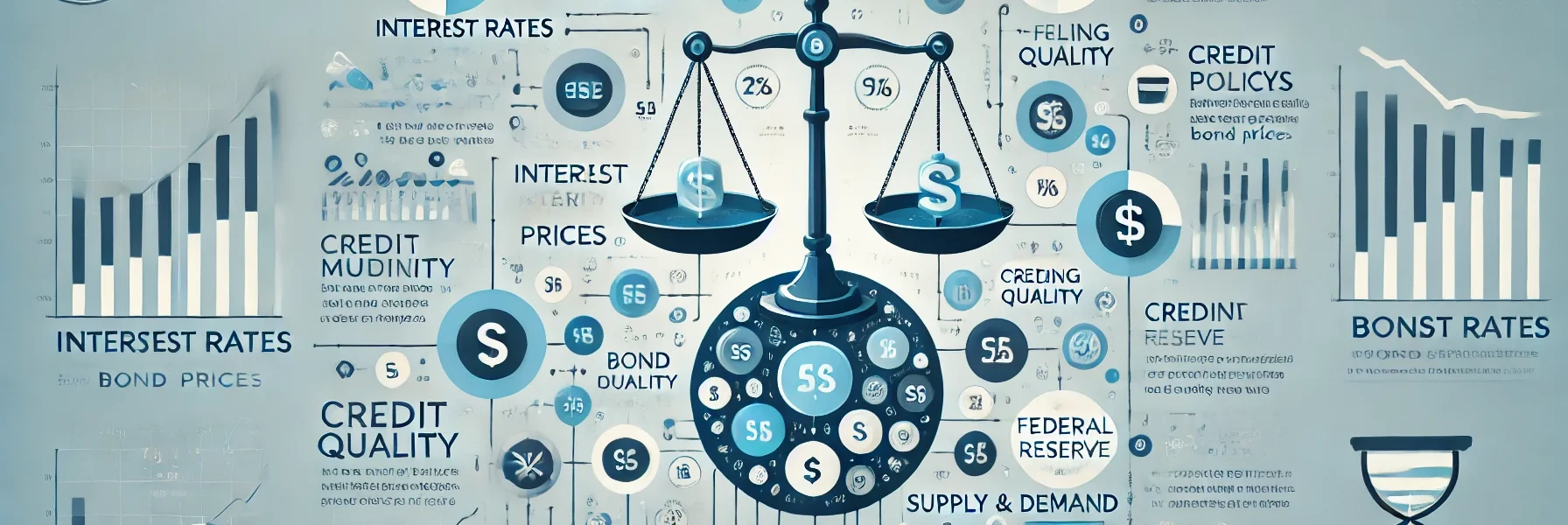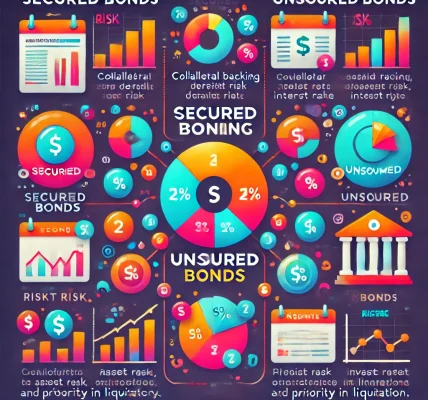Bonds are a fundamental part of many investment portfolios, offering a balance of security and predictable returns. However, understanding how bonds are priced and how market conditions affect their value is crucial for making informed investment decisions. This guide breaks down the core concepts of bond pricing, the factors influencing it, and how various market conditions impact bond values.
What Is Bond Pricing?
Bond pricing refers to the current market value of a bond, which may differ from its face value (or par value). A bond is essentially a loan from an investor to a government or corporation in exchange for periodic interest payments and the return of the principal amount at maturity.
The price of a bond fluctuates in the secondary market due to several factors, including changes in interest rates, credit quality, and the broader economic environment. Understanding these dynamics is essential for anyone investing in bonds.
Key Factors That Influence Bond Prices
1. Interest Rates
One of the most significant factors affecting bond prices is the prevailing interest rate environment. There is an inverse relationship between bond prices and interest rates:
- When interest rates rise, bond prices fall.
- When interest rates fall, bond prices rise.
Why does this happen?
When new bonds are issued at higher interest rates, existing bonds with lower rates become less attractive, reducing their market value. Conversely, when interest rates drop, older bonds with higher fixed rates become more desirable, driving up their price.
2. Bond Maturity
The length of time until a bond matures also affects its sensitivity to interest rate changes:
- Short-term bonds are less affected by interest rate fluctuations.
- Long-term bonds are more sensitive to changes in interest rates due to the extended duration of fixed payments.
Investors must weigh the trade-off between the stability of short-term bonds and the potentially higher returns of long-term bonds.
3. Credit Quality
A bond’s credit rating reflects the issuer’s ability to meet its financial obligations. Bonds with higher credit ratings (e.g., AAA) are considered safer but generally offer lower yields. Conversely, lower-rated bonds (e.g., junk bonds) present higher risks and higher potential returns.
Factors affecting credit quality include:
- Financial health of the issuer
- Economic conditions
- Industry-specific risks
4. Inflation
Inflation erodes the purchasing power of future bond payments. When inflation is rising, bond prices tend to fall because the fixed payments become less valuable in real terms. Inflation-linked bonds, like Treasury Inflation-Protected Securities (TIPS), can help mitigate this risk.
5. Supply and Demand
Like any other asset, the price of bonds is affected by supply and demand dynamics. If there is high demand for bonds (often during economic uncertainty), prices increase. Conversely, when investors prefer riskier assets, bond prices may decrease.
Types of Bond Pricing
1. Par Value
This is the face value of a bond, typically $1,000, which the issuer agrees to repay at maturity. Bonds purchased at their par value yield exactly the stated interest rate.
2. Discount Bonds
When a bond is sold for less than its par value, it is considered a discount bond. This occurs when the bond’s coupon rate is lower than prevailing market rates.
3. Premium Bonds
When a bond is sold for more than its par value, it is known as a premium bond. This typically happens when the bond’s coupon rate is higher than current market rates.
How to Calculate Bond Prices
The price of a bond is the present value of its future cash flows (interest payments and principal repayment) discounted at the current market interest rate.
Bond Price Formula:
Where:
- C = Coupon payment
- r = Discount rate (current interest rate)
- t = Period
- F = Face value of the bond
- T = Time to maturity
Market Conditions and Their Impact on Bond Pricing
1. Economic Growth
In a growing economy, interest rates may rise as central banks attempt to control inflation. This leads to a decrease in bond prices. Conversely, during economic downturns, central banks may lower interest rates, increasing bond prices.
2. Federal Reserve Policy
The monetary policies of central banks, like the Federal Reserve, directly influence interest rates. Expansionary policies (lowering rates) increase bond prices, while contractionary policies (raising rates) reduce bond prices.
3. Global Events
Geopolitical risks, pandemics, or financial crises often increase demand for safer assets like government bonds. This “flight to safety” pushes bond prices higher while reducing yields.
4. Inflation Expectations
When investors expect rising inflation, bond prices typically fall as the fixed payments lose value over time. Deflation, on the other hand, increases the attractiveness of fixed-income investments, raising bond prices.
Strategies for Managing Bond Price Risk
- Diversification: Invest across different types of bonds (government, corporate, municipal) to spread risk.
- Bond Laddering: Invest in bonds with staggered maturities to reduce interest rate risk and maintain liquidity.
- Inflation-Protected Bonds: Use TIPS or other inflation-linked bonds to safeguard against rising prices.
- Monitor Economic Indicators: Keep an eye on interest rate trends, inflation data, and central bank policies to make informed decisions.
Conclusion
Understanding bond pricing and how market conditions affect value is essential for making sound investment choices. By recognizing the relationship between interest rates, credit quality, and economic conditions, investors can better navigate the bond market and mitigate potential risks.
Whether you are a novice or an experienced investor, staying informed about these dynamics can help you optimize your bond portfolio for stability and growth. Always consider consulting a financial advisor to tailor your bond investments to your unique financial goals and risk tolerance.



